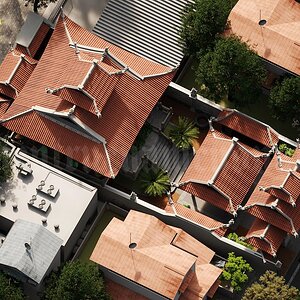Navigation
Install the app
How to install the app on iOS
Follow along with the video below to see how to install our site as a web app on your home screen.

Note: This feature currently requires accessing the site using the built-in Safari browser.
More options
You are using an out of date browser. It may not display this or other websites correctly.
You should upgrade or use an alternative browser.
You should upgrade or use an alternative browser.
How intelligent is the average photographer?
- Thread starter danaman
- Start date
oldmacman
TPF Noob!
- Joined
- Jul 16, 2010
- Messages
- 1,597
- Reaction score
- 70
- Location
- Southern Ontario
- Website
- www.mcavoyphoto.com
- Can others edit my Photos
- Photos OK to edit
It's not so much an instruction manual as a list of possible scenarios for shooting. I know I am just feeding your advertising by responding, but if you really have a friend that has criticized your chart, good on him. You are approaching the task from someone who knows photography when really your device is for someone who wants idiot proof results.
oldmacman
TPF Noob!
- Joined
- Jul 16, 2010
- Messages
- 1,597
- Reaction score
- 70
- Location
- Southern Ontario
- Website
- www.mcavoyphoto.com
- Can others edit my Photos
- Photos OK to edit
It's not so much an instruction manual as a list of possible scenarios for shooting. I know I am just feeding your advertising by responding, but if you really have a friend that has criticized your chart, good on him. You are approaching the task from someone who knows photography when really your device is for someone who wants idiot proof results.
My intent really isn't to advertise, isn't this part of the forum for asking advice for photography businesses? I see a bunch of people here posting links to their websites & on their signatures... sooo... what did I do wrong? So what your saying is its too complicated for the average photographer to understand? I am confused...
It's not too complicated, it just doesn't give any instruction. You show scenarios, but not how to manipulate the device to get to the proper setting/orientation. Perhaps indicate why the settings you show are the "ideal" settings. Indicate the benefit of your device over a standard bounce or diffuser. Indicate the benefit of bouncing off the floor and ceiling.
Josh66
Been spending a lot of time on here!
- Joined
- Oct 31, 2007
- Messages
- 14,593
- Reaction score
- 1,239
- Location
- Cedar Hill, Texas
- Can others edit my Photos
- Photos NOT OK to edit
It seems pretty simple to understand to me. That thing is huge though...
I think that basically anybody that has ever used a flash will be able to figure it out.
I think that basically anybody that has ever used a flash will be able to figure it out.
It's not so much an instruction manual as a list of possible scenarios for shooting. I know I am just feeding your advertising by responding, but if you really have a friend that has criticized your chart, good on him. You are approaching the task from someone who knows photography when really your device is for someone who wants idiot proof results.
My intent really isn't to advertise, isn't this part of the forum for asking advice for photography businesses? I see a bunch of people here posting links to their websites & on their signatures... sooo... what did I do wrong? So what your saying is its too complicated for the average photographer to understand? I am confused...
It's not too complicated, it just doesn't give any instruction. You show scenarios, but not how to manipulate the device to get to the proper setting/orientation. Perhaps indicate why the settings you show are the "ideal" settings. Indicate the benefit of your device over a standard bounce or diffuser. Indicate the benefit of bouncing off the floor and ceiling.
Thanks man I am totally not here to advertise in fact I'll talk in non professional mannerism like OMG or WTF (DO NOT BUY FROM ME!!!) I really honestly just wanted some opinions.. I think its best if I remove the link to my website it may give me some more validity. Ic but what about the top part that shows the camera n flash orientation? isn't that enough? I'll try n put some info in there that talks about why bounces = bigger light sources & softer light.
It seems pretty simple to understand to me. That thing is huge though...
I think that basically anybody that has ever used a flash will be able to figure it out.
& my friend wants to price it at 150$ don't you think that's too expensive? I was thinking like 100$ is fair...
Josh66
Been spending a lot of time on here!
- Joined
- Oct 31, 2007
- Messages
- 14,593
- Reaction score
- 1,239
- Location
- Cedar Hill, Texas
- Can others edit my Photos
- Photos NOT OK to edit
Do you have pictures of just the unit, unmounted?
There are certainly a lot of other flash diffusers in the $100-150 price range (or even more), so it's not unheard of... Hard to say what I would pay for it without seeing more pictures - including some pictures taken with it too.
There are certainly a lot of other flash diffusers in the $100-150 price range (or even more), so it's not unheard of... Hard to say what I would pay for it without seeing more pictures - including some pictures taken with it too.
Kerbouchard
TPF Noob!
- Joined
- Apr 1, 2010
- Messages
- 2,697
- Reaction score
- 575
- Location
- DFW
- Can others edit my Photos
- Photos OK to edit
The part I don't like about your chart is it's inaccuracies. I don't know what your device does, and I wouldn't pay for it, so I'm not your target audience.
That being said, I just think it's silly to put a chart of 'recommended' settings on any flash unit or modifier. One, you don't know how much power their flash has. Two, you don't know how bright ambient is. Three, you don't know which TTL tech from what manufacturer they are using. Four, you don't know if they have matrix, or spot, or center weighted metering set. Five, In columns two and four, you are basically saying there is a one stop exposure difference between what looks to be a fairly dim indoors and a fairly bright outdoors, that just doesn't make sense to me. Seems in column 4 if you used those settings, your background would be horribly over exposed. Even worse than the example photo. Six, I guess I don't understand the point of some of your configurations...why would I ever want to bounce equal light off two walls? Or off the ceiling and the floor? Or off the ceiling, walls and floor?
So, I guess I would say that while I understand your 'instructions' and think it is laid out fairly simple as to how you want your device to be used, I don't see the point. I can't imagine why I would use some of those configs, and I think it is a bit far reaching to think that somebody who will spend $150 on a lighting modifier needs to be told what aperture, shutter speed, and ISO he should be at, especially since you couldn't possibly know all the configurations that your device would be used with.
That being said, I just think it's silly to put a chart of 'recommended' settings on any flash unit or modifier. One, you don't know how much power their flash has. Two, you don't know how bright ambient is. Three, you don't know which TTL tech from what manufacturer they are using. Four, you don't know if they have matrix, or spot, or center weighted metering set. Five, In columns two and four, you are basically saying there is a one stop exposure difference between what looks to be a fairly dim indoors and a fairly bright outdoors, that just doesn't make sense to me. Seems in column 4 if you used those settings, your background would be horribly over exposed. Even worse than the example photo. Six, I guess I don't understand the point of some of your configurations...why would I ever want to bounce equal light off two walls? Or off the ceiling and the floor? Or off the ceiling, walls and floor?
So, I guess I would say that while I understand your 'instructions' and think it is laid out fairly simple as to how you want your device to be used, I don't see the point. I can't imagine why I would use some of those configs, and I think it is a bit far reaching to think that somebody who will spend $150 on a lighting modifier needs to be told what aperture, shutter speed, and ISO he should be at, especially since you couldn't possibly know all the configurations that your device would be used with.
The part I don't like about your chart is it's inaccuracies. I don't know what your device does, and I wouldn't pay for it, so I'm not your target audience.
That being said, I just think it's silly to put a chart of 'recommended' settings on any flash unit or modifier. One, you don't know how much power their flash has. Two, you don't know how bright ambient is. Three, you don't know which TTL tech from what manufacturer they are using. Four, you don't know if they have matrix, or spot, or center weighted metering set. Five, In columns two and four, you are basically saying there is a one stop exposure difference between what looks to be a fairly dim indoors and a fairly bright outdoors, that just doesn't make sense to me. Seems in column 4 if you used those settings, your background would be horribly over exposed. Even worse than the example photo. Six, I guess I don't understand the point of some of your configurations...why would I ever want to bounce equal light off two walls? Or off the ceiling and the floor? Or off the ceiling, walls and floor?
So, I guess I would say that while I understand your 'instructions' and think it is laid out fairly simple as to how you want your device to be used, I don't see the point. I can't imagine why I would use some of those configs, and I think it is a bit far reaching to think that somebody who will spend $150 on a lighting modifier needs to be told what aperture, shutter speed, and ISO he should be at, especially since you couldn't possibly know all the configurations that your device would be used with.
That is very true, thnx for the input. I think in the future I'll make different instruction manuals for each type of flash n camera. Its all really hard to make a decent instructions manual cus either they are too noob or too pro to even use it >< So I thought it would be good to make one for the peeps in the middle. I was going to stay away from any sort of promoting of the wing light, but since you brought it up, in general double wall bounces or floor & ceiling bounce is very similar to having 2 giant soft boxes in regards to lighting so it makes photos look really soft. Here is a flickr link to some of the photos I took with only the wing light Gallery (there is no link to my website) the type of lighting used is listed on the description.
O & if your the diy type of guy like me you could always make a wing light all u need is a something to split light in half & two white bounce cards
Similar threads
- Replies
- 66
- Views
- 5K
- Replies
- 12
- Views
- 791
- Replies
- 8
- Views
- 446
- Replies
- 6
- Views
- 555
- Replies
- 4
- Views
- 475

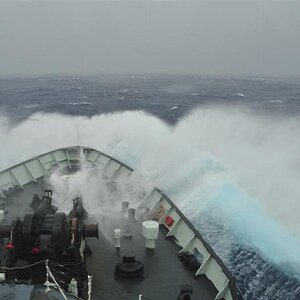
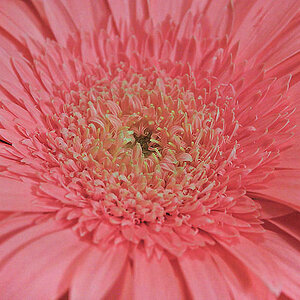
![[No title]](/data/xfmg/thumbnail/39/39291-a89dc472765e04f66f617dd9acc8030d.jpg?1619738958)

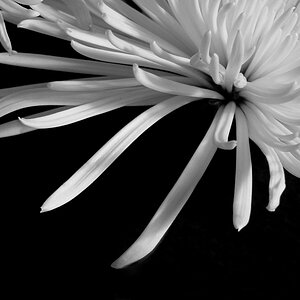

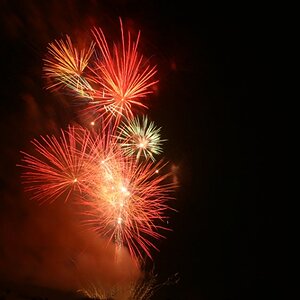
![[No title]](/data/xfmg/thumbnail/40/40286-86401b94de8b01bea8bb4ea154aaea0a.jpg?1619739408)
![[No title]](/data/xfmg/thumbnail/33/33025-0e4fc16dd87a477880f7aa74466d4f56.jpg?1619735838)


